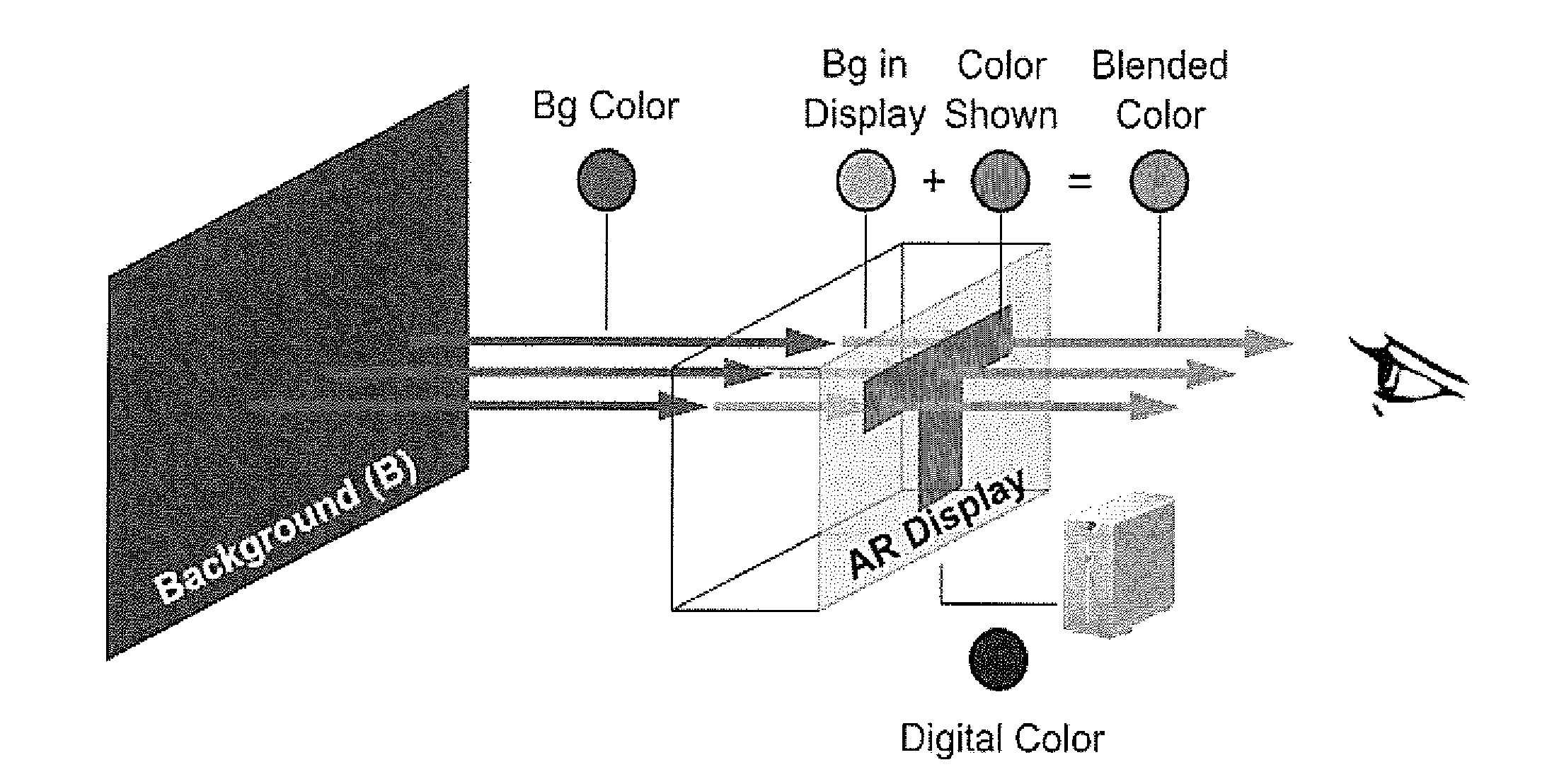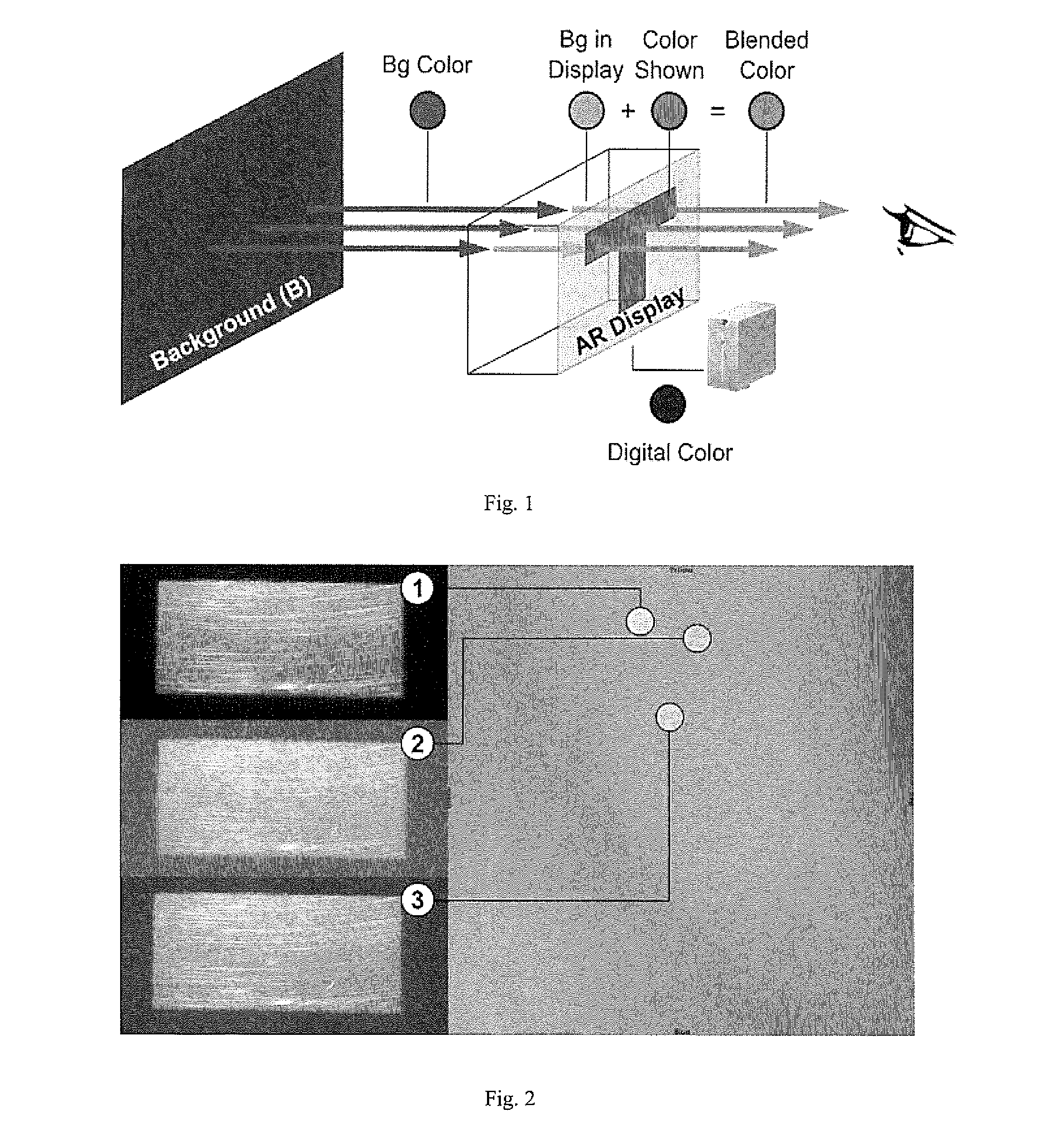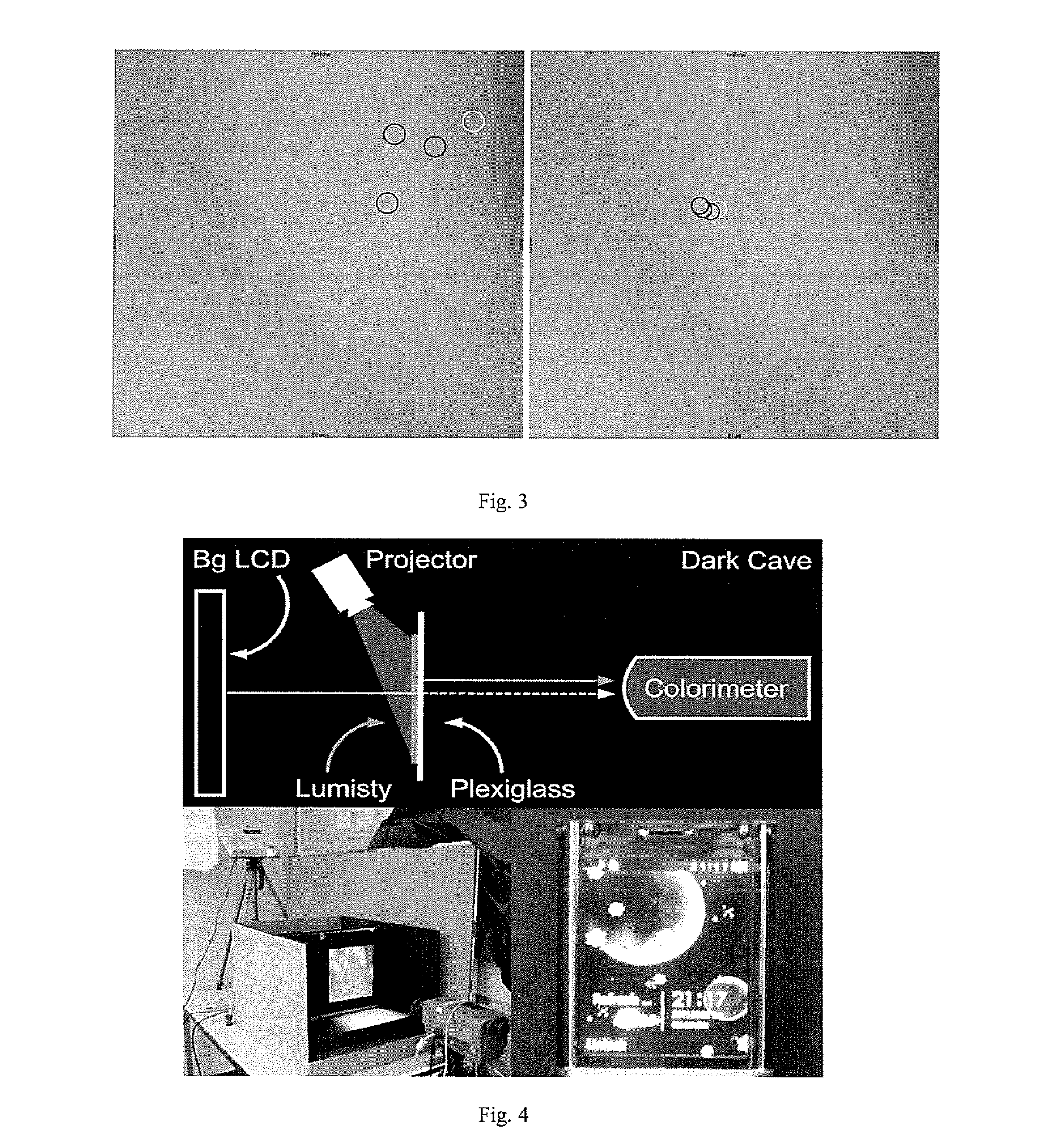Color Correction Method for Optical See-Through Displays
a color correction method and display technology, applied in the field of color correction methods for optical see-through displays, can solve the problems of reducing the readability of text, reducing the usability of such devices, and reducing the usability of background [4]
- Summary
- Abstract
- Description
- Claims
- Application Information
AI Technical Summary
Benefits of technology
Problems solved by technology
Method used
Image
Examples
Embodiment Construction
[0109]In optical see-through displays, light coming from background objects mixes with the light originating from the display, causing what is known as the color blending problem. Color blending negatively affects the usability of such displays as it impacts the legibility and color encodings of digital content. Color correction alms at reducing the impact of color blending by finding an alternative display color which, once mixed with the background, results in the color originally intended.
[0110]In this specification we model color blending based on two distortions induced by the optical see-through display. The render distortion explains how the display renders colors. The material distortion explains how background colors are changed by the display material. We show the render distortion has a higher impact on color blending and propose binned-profiles (BP) descriptors of how a display renders colors to address it. Results show that color blending pre-dictions using BP have a lo...
PUM
 Login to View More
Login to View More Abstract
Description
Claims
Application Information
 Login to View More
Login to View More - R&D
- Intellectual Property
- Life Sciences
- Materials
- Tech Scout
- Unparalleled Data Quality
- Higher Quality Content
- 60% Fewer Hallucinations
Browse by: Latest US Patents, China's latest patents, Technical Efficacy Thesaurus, Application Domain, Technology Topic, Popular Technical Reports.
© 2025 PatSnap. All rights reserved.Legal|Privacy policy|Modern Slavery Act Transparency Statement|Sitemap|About US| Contact US: help@patsnap.com



